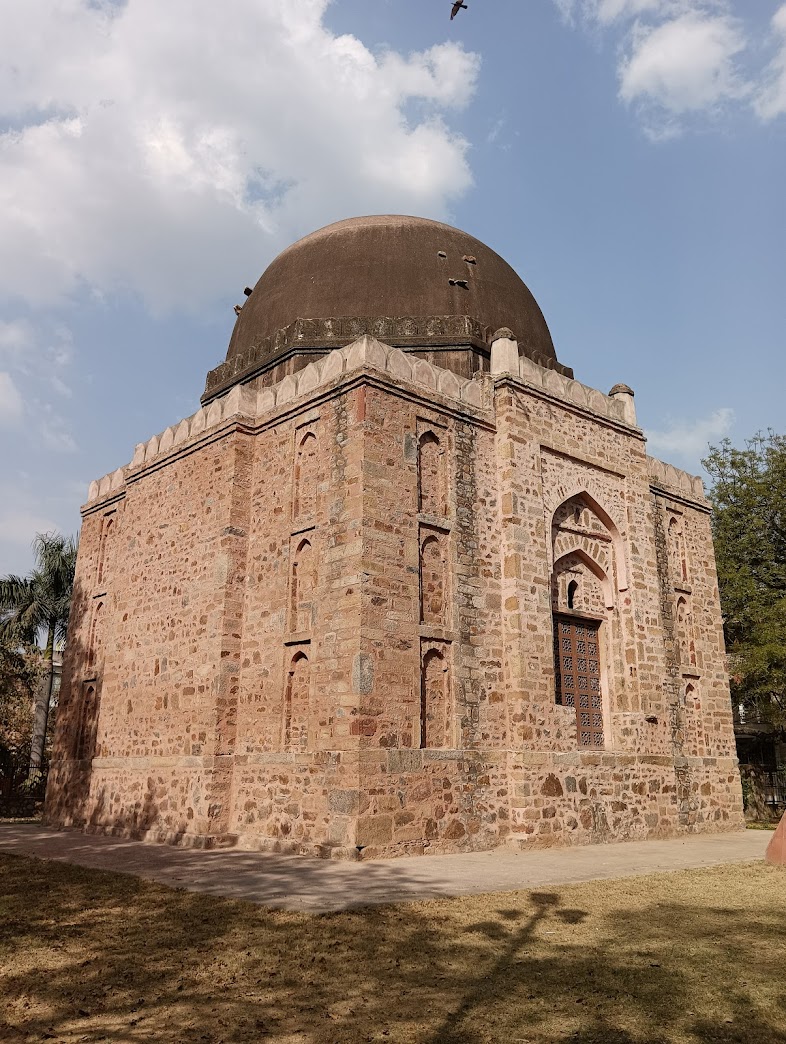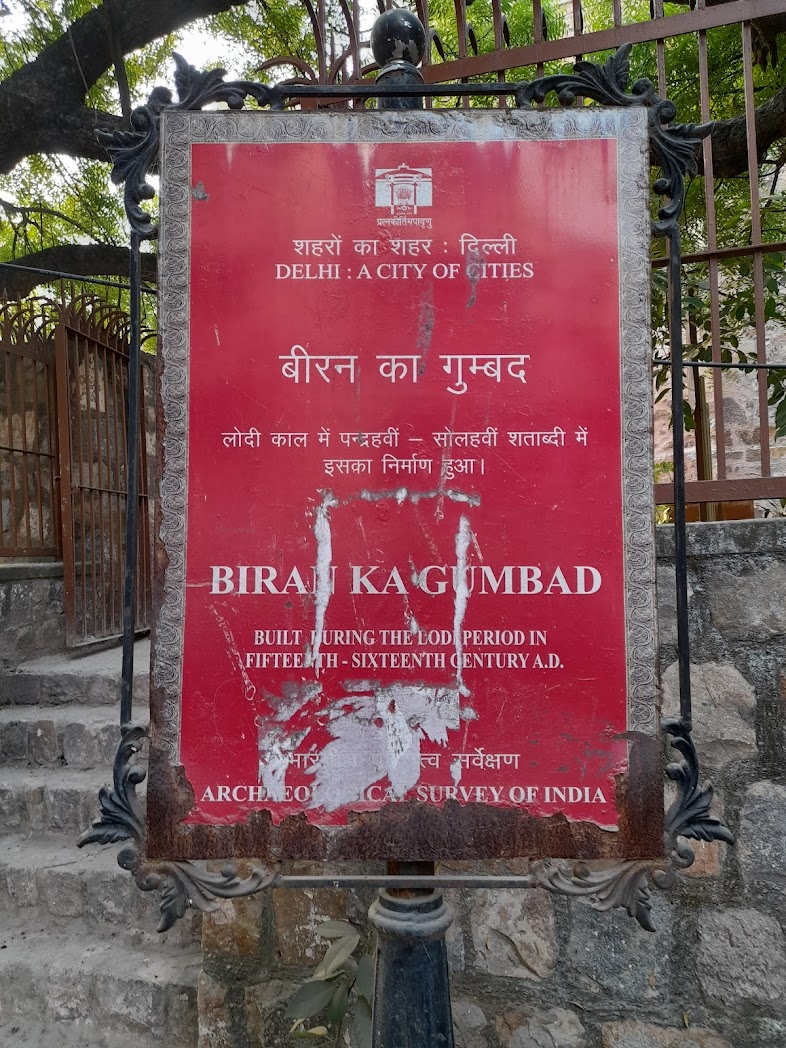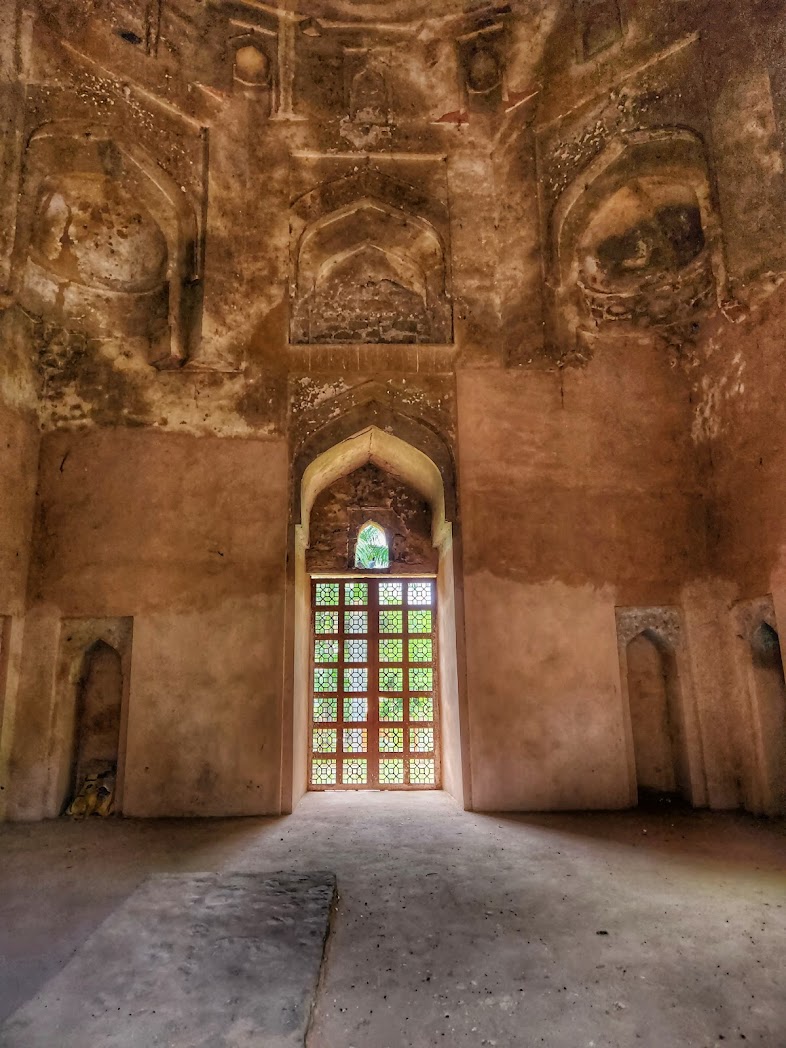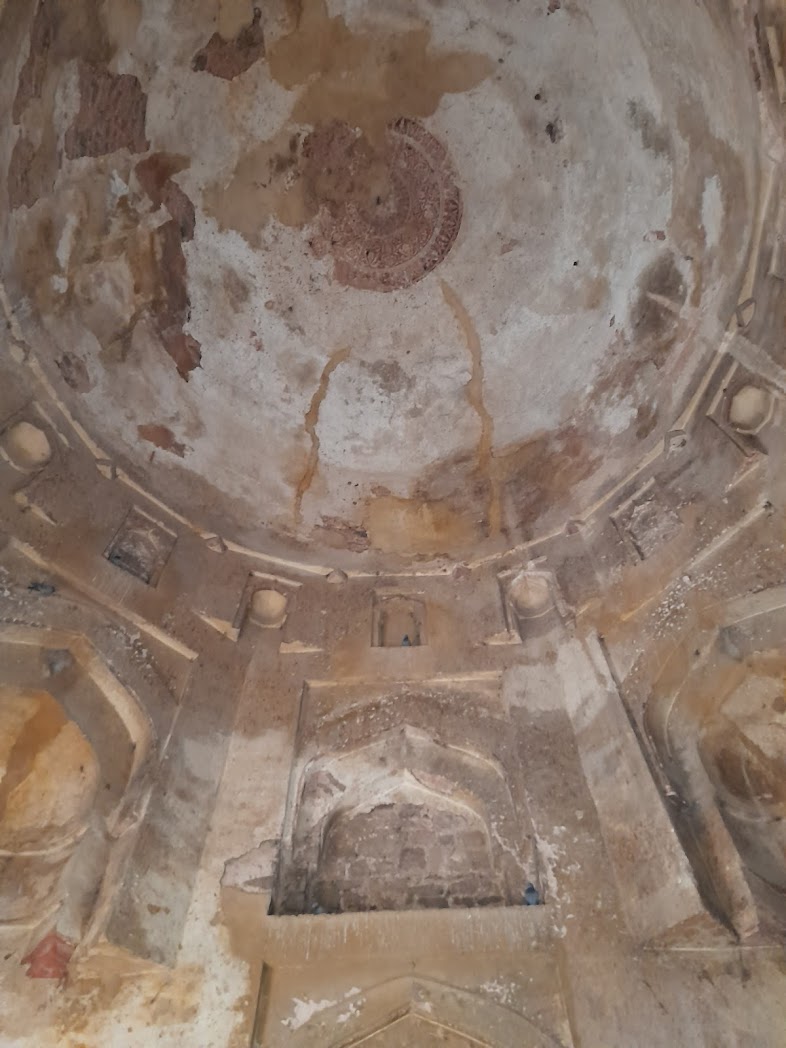



Biran ka Gumbad is a 14th-century tomb located in South Delhi, India, and is part of the Lodi Gardens complex. The monument is believed to have been built during the reign of the Lodi dynasty, which ruled Delhi in the late medieval period. It is considered a part of the architectural heritage from the Delhi Sultanate, specifically under the Lodi rule (1451–1526). Features: Architecture: Biran ka Gumbad is a dome-shaped structure, characteristic of Indo-Islamic architecture. The tomb is square in shape, with sloping walls and a large hemispherical dome at the top. Materials: The tomb is built from locally available stone, brick, and plaster, and has decorative motifs typical of the era, including pointed arches, floral designs, and Quranic inscriptions. Historical Significance: The exact identity of the person buried here is not definitively known, but it is believed that the tomb was constructed for a nobleman or important figure of the Lodi court. The Gumbad (dome) is part of a larger historical and cultural landscape that reflects the architectural evolution under the Lodi dynasty, preceding the Mughal architecture that Delhi is famous for. Today, it remains a symbol of the fading yet rich history of the medieval Islamic rule in India.